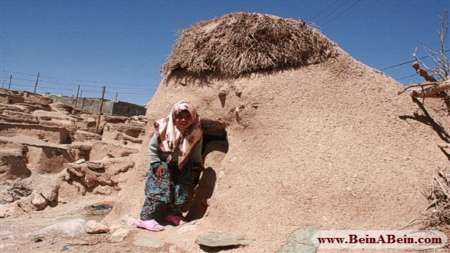
The village has gained reputation as ‘Lilliput Village’ globally because most of its residents were hardly taller than one meter in the past. However, experts say only a handful of dwarf residents still live there.
Architectural remains, dating back to the Neolithic Era that were discovered in the village a few years ago, have also increased the number of arrivals motivating more domestic and foreign tourist agencies to put Makhunik Village on their schedules.
The number of eco-friendly accommodation centers in the village is to increase and this is predicted to help raise the number of arrivals.
To learn more about the attractions of Makhunik Village, Iran Daily conducted an interview with Javad Sirousi, an archeologist of South Khorasan Cultural Heritage, Handicrafts and Tourism Department.
Excerpts follow:
IRAN DAILY: Entrances to the houses that are much lower than normal attract the attention of visitors upon arrival in the village. Such a unique architecture has drawn the attention of many tourists over the past years. Is it true that Makhunik is the village of the Lilliputians?
JAVAD SIROUSI: Visitors to the village expect to find dwarfs with the height of 20 centimeters but the reality is that people with such physiques have never inhabited this village.
The ancient residents of Makhunik were 60 centimeters shorter than the average height of that time — 160 centimeters.
The average height of people has increased over years, so that only seven dwarfs, most of whom are old, live in the village.
Why were the ancient residents of Makhunik dwarfs?
Many reasons have been cited for it, but three of them seem to be more valid than others. Popularity of consanguineous marriages (which caused genes responsible for determining height to be passed among residents), lack of protein and vitamin in daily diet, and the mercury residues in drinking water (which was associated with nearby mines), are reasons for the alteration in physiques of residents.
How did ancient inhabitants earn their living?
The first settlers of the village were farmers, as livestock breeding was not much popular in the region. However, they were threatened by intruders at times who plundered their crops. To save their crops, the residents dug deep trenches in mountains to store foodstuffs. The holes, called ‘Kanduk’, are still used by farmers.
What was the main diet of the residents?
Turnip and ‘Kashk Beneh’ — made from a type of pistachio that is grown in the mountains — constituted the staple food of people here. Although, livestock breeding has become popular, people still obtain food from farms.
Many experts believe that architectural styles of Makhunik Village are a dynamic testimony to the Neolithic Era and the lifestyle of people that lived in the region that time. Please tell us more about this.
Early humans were cave dwellers who decided to move out of their caves and live in outdoors in the Neolithic Era. However, they had to build shelters, which were made of wood, soil, mud and straw, to protect themselves from wild animals and climatic conditions.
The remains of such settlements dating back to 10,000 years have been found in Sarab Hill and Ganj Valley in Kermanshah Province.
Makhunik Village was established 1,500 years ago. What is interesting is that the residents of Makhunik built houses according to architectural styles that were common in the Neolithic Era.
The inhabitants of the village have still preserved the lifestyle and architectural style of that period.
There are houses in the village that were used as shelters for the sick. Residents, who exhibited the symptoms of a disease, were transferred to the houses, which were a long distance from the residential areas. The patients were treated there until they fully recovered.
Houses cannot be identified at first glance due to the unique design of the village. Why is it like this?
Makhunik Village is situated near the border with Afghanistan and Sistan-Baluchestan Province, which made it prone to continuous invasions by the Afghans and the Baluchis.
Ancient inhabitants made their houses of soil and straw to make them undetectable from afar.
The entrances were built at the heights of 80 and 200 centimeters. In addition, deep trenches were dug around the village to keep intruders away.
Are there similar villages in the region?
Yes, 12 other villages were established by the ancient inhabitants of Makhunik Village.
With an increase in the number of arrivals, officials decided to establish accommodation centers in the village. What steps have been taken in this respect?
The unique architecture of the village, which has been preserved over centuries, has drawn global attention to the village. Establishment of modern hotels near the village can harm its environment and pristine culture. There are a number of vacant houses in the village, which can be converted into eco-friendly accommodation centers.
Foreign tourists prefer such houses to modern hotels.

Add new comment